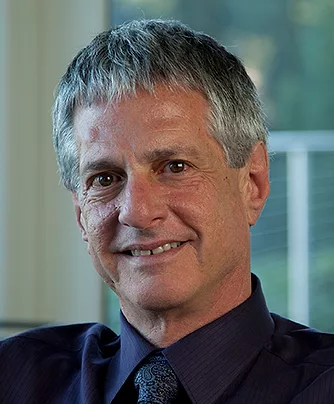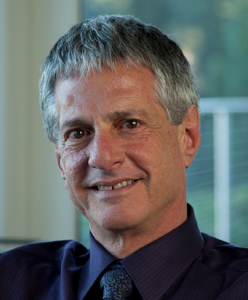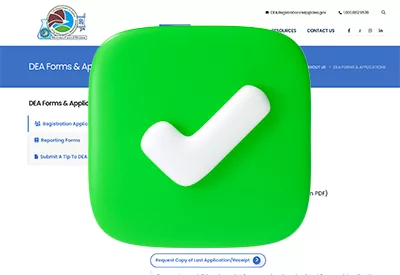Civil Commitment for Substance Use Disorders

Kenneth Minkoff, MD. Vice President of ZiaPartners, Inc., Tucson, AZ.
Dr. Minkoff has no financial relationships with companies related to this material.
CHPR: To start us off, what originally led states to create civil commitment laws for substance use disorders (SUDs)?
Dr. Minkoff: These laws have been around for decades, and they usually come from a place of deep frustration. Family members, law enforcement, and others in the community encounter people with serious SUDs—people who are spiraling, refusing help, and putting themselves or others at risk. There’s a sense of helplessness: “If we could just make them get treatment, we could save their lives.” That impulse has driven a lot of legislation. But whether these laws are truly effective is another story. A recent survey showed that 37 states, plus the District of Columbia, have these laws (See map below), but most states rarely use them (www.tinyurl.com/4vxsznun). California became the most recent state to enact similar legislation, in October 2023. The only two states that have made regular use of these laws are Florida and Massachusetts.

CHPR: Why do you think these laws are so rarely used, despite being on the books in so many states?
Dr. Minkoff: In many places, there’s just nowhere to send people, and there is no clear indication that civil commitment produces benefit for people with SUDs. Facilities may be full, under-resourced, or not equipped to accept involuntary patients. In Massachusetts, for example, the law doesn’t permit people with SUDs to be committed to a mental health facility. They’re typically sent to correctional or specialized addiction treatment settings. Men are often placed in treatment centers located on prison grounds—they’re technically not incarcerated, but the setting feels like one. Until recently, women didn’t even have access to a noncarceral option. In California, many mental health facilities aren’t licensed to admit people solely for addiction, and there is no option for involuntary treatment in SUD settings. Locked facilities specifically for SUDs are largely unavailable, which limits the ability to implement civil commitment even when it is legally permitted. In Florida, civil commitment for SUD is permitted under the Marchman Act, but there are few, if any, published data on how the law is applied and on the outcomes for individuals who receive these interventions.
CHPR: Even when the laws are used, the care people receive often isn’t very effective.
Dr. Minkoff: Right. Across the country, people who’ve experienced involuntary treatment often report substandard care—limited access to effective medications like buprenorphine or methadone, and very little follow-up support once they’re discharged (Evans EA et al, J Law Med Ethics 2020;48(4):718–734). Even when facilities are available, if they aren’t connected to a strong continuum of care, people just fall through the cracks. You can commit someone, but if they walk out the next day or never get meaningful help, what have you actually accomplished? Further, we know that the “brain disorder” of addiction does not go away simply because the person is confined for an extended period. Something different needs to occur AFTER the involuntary intervention in order to promote progress over time.
“When a law like this is passed, it can act like a big hammer, and suddenly, everyone looks like a nail. There’s a real risk that systems will respond to public pressure by using involuntary treatment just to get people off the streets, rather than as a meaningful part of a care plan.”
Kenneth Minkoff, MD
CHPR: It’s interesting that, even though the evidence behind these laws is shaky, more states are still passing them, like California did two years ago.
Dr. Minkoff: The big driver in California was the crisis of visible homelessness related to substance use. Emergency medical services and law enforcement were watching people overdose and die, and the public wanted action. Combined with the worsening opioid epidemic, the urgency was hard to ignore.
CHPR: How does civil commitment differ from court-mandated treatment through the criminal justice system?
Dr. Minkoff: Both are involuntary, but the kind of coercion is different. In the criminal justice system, people might be offered treatment as an alternative to jail, but they still experience themselves as making a choice to accept that alternative. Civil commitment doesn’t involve a crime, nor is a choice available—someone else decides you’re at risk and forces you into treatment. That kind of power needs to be used very thoughtfully.
CHPR: How do you identify the right candidates for this kind of intervention?
Dr. Minkoff: In California, the focus is on people with very visible, untreated severe SUDs, who are often chronically homeless, with frequent emergency room visits, arrests, and severe medical needs. They’re often stabilized in emergency medical or psychiatric settings and then released, only to repeat the cycle. Many also have co-occurring psychiatric conditions that are masked by their substance use. Or once the substance use improves, their psychiatric symptoms seem less severe and they fall off the radar. Either way, they fall through the cracks. The goal is to reverse that. Involuntary commitment isn’t the goal; it’s just a tool to get people into relationships and services that they’ll stay connected to voluntarily.
CHPR: Part of the reason they fall through the cracks is stigma, right? These people are often viewed as less deserving of care.
Dr. Minkoff: Yes, that’s a huge reason. There’s still this idea that addiction is a choice—not a disease—and that people who use heroin or meth brought it on themselves. Meanwhile, people with conditions like schizophrenia are often seen as more deserving of care. That attitude shows up in policy decisions, in treatment access, and in how individual clinicians interact with patients (Adams JM and Volkow ND, AMA J Ethics 2020;22(1):E702–E708). In focus groups, people with lived experience tell us it only takes one judgmental comment—“You’ve been here 40 times; why haven’t you gotten sober?”—to shut them down. We emphasize relationships that are based in empathy, hope, and continuing support. If involuntary treatment is handled poorly, it just drives people away.
CHPR: How do we draw the line between someone capable of refusing care and someone who truly meets criteria for involuntary intervention?
Dr. Minkoff: That’s one of the toughest decisions, especially with substance use. The key is to look at the person’s ability to make decisions in the context of their illness. Are they refusing care because they understand the risks and have a coherent reason, or because their brain is hijacked by addiction, withdrawal, or co-occurring symptoms like psychosis or cognitive disorganization? Someone might say they don’t want help, but if that refusal is coming from acute impairment—like they’re actively psychotic, cycling through withdrawal, experiencing overwhelming cravings to use, or unable to meet their basic needs—then that’s not informed refusal so much as a symptom of the underlying brain disease of addiction. You have to assess whether they can engage in a rational decision-making process about their own safety. Repeated overdoses, disorganized behavior, or total disengagement from reality are all red flags. And you have to look at patterns. One bad decision doesn’t mean someone lacks capacity. But a consistent inability to recognize danger, despite serious harm, may indicate they truly need protection. That’s when civil commitment becomes a consideration. It’s important to know your state’s standards and document how the person meets them (Editor’s note: For more state-by-state details, see: www.tinyurl.com/yma83nx2).
CHPR: Does the SUD legislation allow the same types of involuntary commitment holds for addiction as it does for psychiatric diagnoses?
Dr. Minkoff: Each state is different. It does in California, where the same legal mechanisms, like 72-hour holds, 14-day holds, and conservatorships, now apply to people with SUDs. That’s a big shift. But what happens next, what services they get, and whether they’re actually helpful hasn’t really been figured out. So far, only a few counties—San Francisco and San Luis Obispo—have formally implemented the law. But all counties must have implementation in place by January 1, 2026. Therefore, most of the others have started implementation planning. And each one is essentially running its own natural experiment. Other states have different rules. In Massachusetts, for example, you can commit someone for up to 30 days under a separate civil substance use law. In Florida, it’s also a separate law (Marchman Act) that results in typically shorter-term holds, just long enough for brief stabilization. But even when the law allows longer holds, that doesn’t guarantee the person will actually receive meaningful care.
CHPR: You’re working with San Mateo County in Northern California. How are you approaching implementation there?
Dr. Minkoff: Our goal isn’t to lock people up and hope that fixes addiction. Addiction, like mental illness, is a chronic brain disease. It doesn’t go away just because someone’s confined. In fact, if someone is released after detox without real support, their reduced tolerance puts them at higher risk of overdose. We started by creating a steering committee, including law enforcement, people with lived experience, providers, and community leaders. One key takeaway was the need to engage people in a way that builds hope, trust, and a sense of possibility. Many of these individuals have experienced repeated failure and have come to believe that what’s being asked of them is impossible. If we’re going to take away someone’s liberty, the result should be connection to relationships that are voluntary and inspiring. And while they’re in that involuntary process, the care we offer has to be meaningful—not just a requirement to sit in groups or get sober, but access to real help.
CHPR: What does that kind of hopeful, voluntary engagement look like in practice?
Dr. Minkoff: Let’s say someone is brought in under an involuntary hold, disoriented, using meth, and refusing care. Instead of just holding them for 72 hours and discharging them with a flyer, we create a connection with the person right away. That might mean a peer support worker—someone who’s been through recovery—sitting with them and saying, “I’ve been where you are.” Or a clinician offering medication to ease withdrawal or anxiety so that the person can stabilize enough to listen. Once they’re engaged, we link them to a team that includes housing support, a therapist they trust, and ideally a prescriber who understands both addiction and mental health. The goal is to shift the experience from “I’m being forced to do this” to “These people actually care and might be able to help.”
CHPR: It’s important to focus on the relational aspect of care, not just the clinical. What services are in that support system?
Dr. Minkoff: We’re making sure people can access medication treatment, like buprenorphine or methadone, even long-acting forms if they’re open to that. Naltrexone may be a valuable first step for those with alcohol use disorders, even those who may continue to use alcohol. Peer support is also critical. We’re making sure there’s continuity of care, whether the person is doing well or not. Everything is wrapped into a “full-service partnership”—that’s California’s term for a recovery-oriented team program model that follows people across settings. It’s not typically used for people with addiction as their main diagnosis, but we think it could be.
CHPR: Are there any best practices on how long to hold someone in a substance use–related crisis, like overdose or withdrawal?
Dr. Minkoff: Honestly, we don’t know yet. We just don’t have good data. With opioids, someone might be revived with naloxone, and as soon as they’re awake, they leave. That’s not because they want to die; it’s because their brain is screaming at them to get high again. So, how long do we need to hold someone before they’re able to really hear us saying, “We can help you”? Seventy-two hours might be enough for some, but what really matters is what happens during that time. Are they in a supportive environment? Is withdrawal being managed? Is someone actively and compassionately engaging with them? Is buprenorphine immediately available? With methamphetamine withdrawal, it’s even tougher. People may be paranoid, psychotic, or cognitively disorganized, and it can take 7–14 days before they’re able to engage, due to the lingering effects of the drug or the severity of withdrawal symptoms. But we don’t have much infrastructure to support that kind of sustained engagement, especially on an involuntary basis.
CHPR: How is the field of addiction treatment evolving to meet these challenges?
Dr. Minkoff: The 4th edition of the ASAM Criteria, released in late 2023, is a big step forward (Waller RC et al, eds. The ASAM Criteria: Treatment Criteria for Addictive, Substance-Related, and Co-Occurring Conditions, Volume 1: Adults. 4th ed. Center City, MN: Hazelden Publishing; 2023). It outlines more realistic, individualized standards for what good addiction treatment should look like. Much of addiction treatment is still based on outdated models of “program completion” that assume once people get sober, they’ll be fine. That approach does work for many, but the people we’re seeing today are far more complex than they used to be.
CHPR: Do you have any concerns about how civil commitment laws might be misused?
Dr. Minkoff: Definitely. When a law like this is passed, it can act like a big hammer, and suddenly, everyone looks like a nail. There’s a real risk that systems will respond to public pressure by using involuntary treatment just to get people off the streets, rather than as a meaningful part of a care plan. My hope is that California can become a model not just for what works, but also for what doesn’t. But without thoughtful oversight, these laws can easily turn into blunt instruments used for punishment. That’s what worries me most. The need is real and urgent, but how we respond to that need makes all the difference.
CHPR: Thank you for your time, Dr. Minkoff.

Newsletters
Please see our Terms and Conditions, Privacy Policy, Subscription Agreement, Use of Cookies, and Hardware/Software Requirements to view our website.
© 2025 Carlat Publishing, LLC and Affiliates, All Rights Reserved.


_-The-Breakthrough-Antipsychotic-That-Could-Change-Everything.webp?t=1729528747)



